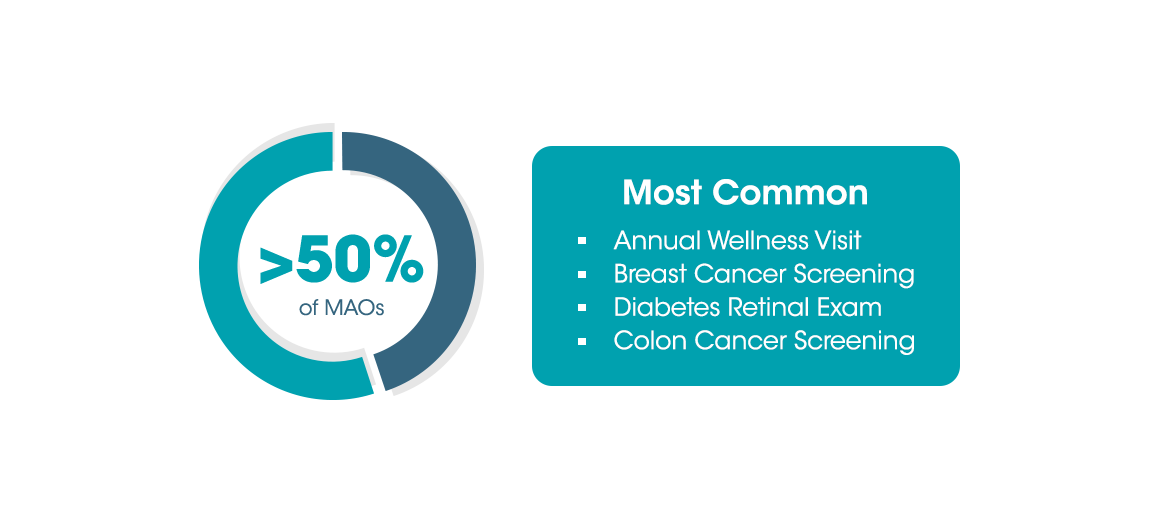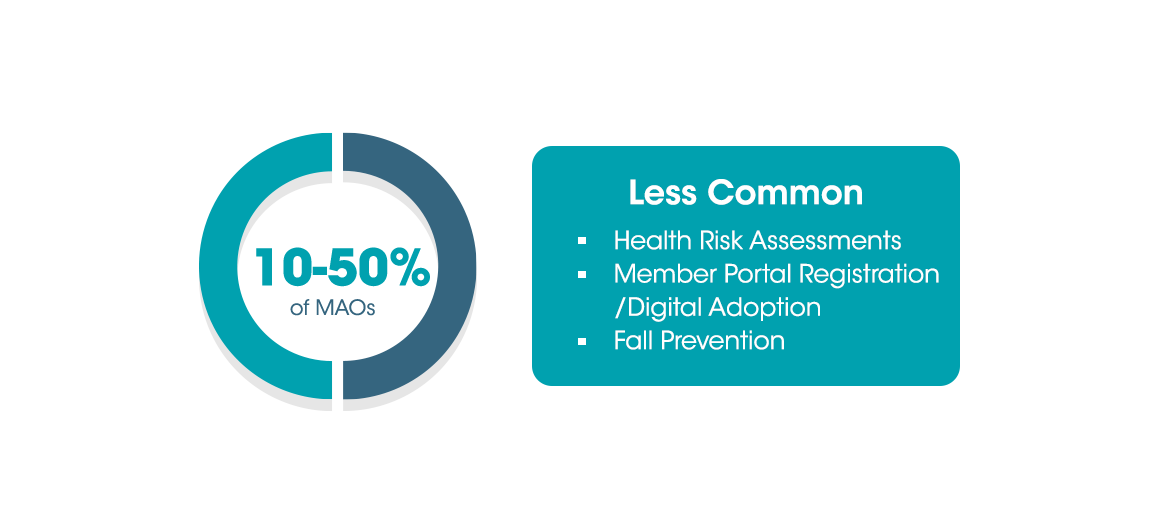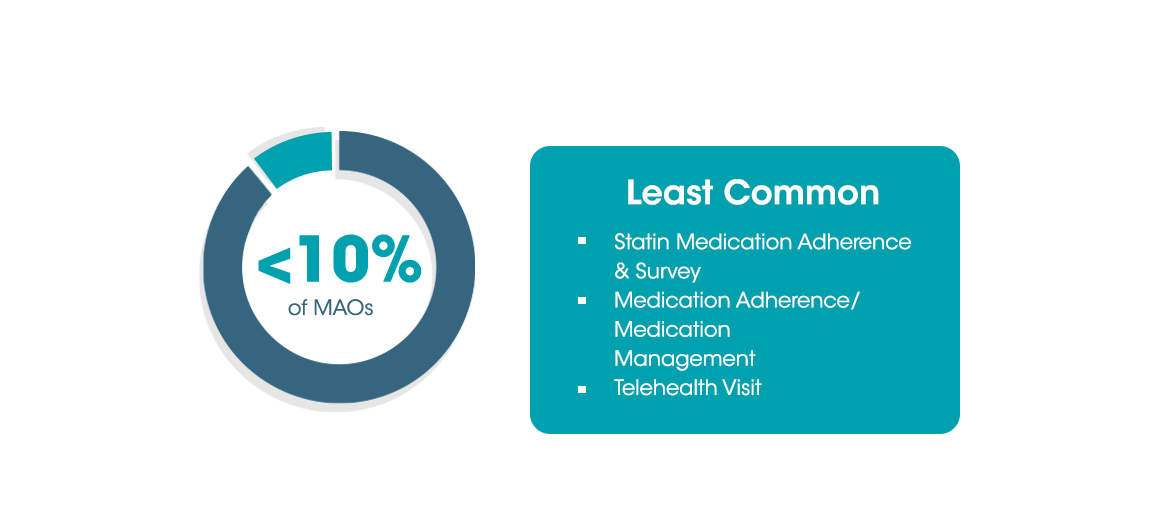
Medicare Advantage rewards and incentives programs aren’t new: nearly every plan Convey partners with has one. Historically, they have focused on HEDIS Star measures and predominantly offered gift cards, but it is safe to say that those days are behind us.
We recently hosted a webinar that dove into the complexities of rewards and incentives. It looked at the current landscape and offered a robust conversation with our panelists, who have considerable experience on the health plan and provider side of the equation.
I moderated the session with Katie Ford, vice president of clinical, quality, and engagement at Convey, and Shawn Larsen, vice president of operations for Curai Health. Sean worked in quality and risk for Aetna, Humana, and Bright HealthCare before joining Curai Health. Katie has Medicare Advantage experience with Aetna, Humana, and John Hopkins Healthcare. She also spent two years in the value-based provider space.
Medicare Advantage Rewards & Incentives: Current Market Challenges
Rewards and incentives programs must overcome internal challenges and external changes to succeed. For members, the challenges can be barriers to earning rewards, whether it’s the enrollment process, proving they completed the activity, or a long lag time for receiving a reward.
From a health plan’s perspective, these programs are costly, and measuring ROI is a genuine challenge. Determining how best to engage members and coordinate that engagement with clinical, Star, and risk programs can be daunting.
Changes driven by CMS and the overall market have an impact as well. That includes the rise of Consumer Assessment of Healthcare Providers and Systems (CAHPS) and Health Outcomes Survey (HOS) measures, improving health equity among Medicare Advantage members, new rewarded activities, and an increase in the popularity of flex cards–Convey has over 1.5 million members using flex cards today.
What Rewarded Activities are Medicare Advantage Organizations Offering?
Convey compiled data from over two dozen Medicare Advantage organizations representing over 7 million members. We included a sample of the most, less, and least common activities:
Building Stronger Provider Relations
Members are often more likely to respond to their provider than their health plan. Strong provider relationships can help drive performance and health outcomes. One success story shared in the webinar was embedding CAHPS survey questions into the electronic health record. Medical assistants and providers were trained to ask the six provider-specific questions at every visit, triggering a more engaging conversation at the point of care.
In smaller practices, building relationships may rely on being clear about expectations. Sharing small sets of data and one or two focus areas for the upcoming quarter can help providers feel some ownership.
All the teams involved in these programs must communicate and make the provider part of the program. Otherwise, they will not encourage the patient to participate. They may feel you're getting into their clinical area. Talking with them about why it's important and educating them about the health benefits and incentives for the member is worthwhile.
The Role of Health Equity in Reward & Incentives Programs
How does health equity connect to programs offering specific incentives to certain people? Plans need to target members fairly for rewards. We must give everyone in the same population, within each contract, the same opportunity.
A better data analytic process not only allows for health equity but also drives the diversification of data, allowing plans to segment communication. Not everybody responds the same way. We need to be community-based in how we offer incentives and programs to get the attention of all members. That includes the beginners, the laggers, and those in the middle.
Also, programs need to be as simple as possible so providers want to participate and members engage. Some programs aren’t successful because they’re overly complicated.
Measuring the Success of Your Rewards & Incentives Program
Measuring success can be difficult. Attributing the specific reason a member took action can be challenging. It's sometimes hard to identify the key driver for an outcome.
One way to address that is to take a step back and measure success incrementally instead of comparing today’s score with that of three years ago. How do your benefits support programs you want to move forward for greater retention? How can product development positively contribute toward driving members to complete incented activities? It takes a change in expectations and mindset to look at everything being done to get to the right outcome.
We’ve shifted from HEDIS to CAHPS and HOS measures, and now the focus is on platforms tied to achieving health outcomes and addressing social determinants of health. That means new metrics and ways to analyze data: the goal is to focus on what helps members focus on their mental health and well-being.
From that perspective, more ways exist to capture data showing how your rewards and incentives programs benefit members. These creative strategies encourage you to structure your program based on the behaviors you want to change.
Measuring the Success of Your Rewards & Incentives Program
1. Evolve Earned Rewards
Many Medicare Advantage Organizations have quickly shifted their earned rewards from gift cards to flexible spending cards. The adoption of flex cards have enabled plans to be more creative with the rewards they provide and restrict spending to the purchase of products or services that will contribute positively toward improving the member’s health.
2. Take Advantage of Existing Touchpoints
Better understand and maximize existing member touchpoints to encourage rewarded activities. Plans tend to bombard members with outbound communications, so being targeted with outbound communications that supplement all inbound engagement opportunities is a proven strategy.
3. Develop a “Measure-Overall-Success” Mindset
We have to ensure that the sum of our activities achieve the outcome and that we’re not spending too much time trying to assign credit to the specific action that led to the outcome.











